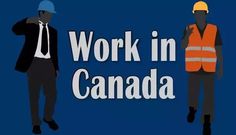How to become an Apprentice in Canada?

posted:3 years agobyAwatef Hamdiin Apprenticeships
Canada is a world leader in various trades and industries. The best solution for people who are not pursuing college studies is to apply for an apprenticeship program in Canada. What is an apprenticeship, and how long does it take to become an apprentice? Here is an article that shows you how to find the best vocational training and directly learn the skills related to the Canadian labor market.
Apprenticeship in Canada:

Apprenticeship is a training and learning program targeting various trades and specialties. This program varies from one territory to another. That is:
-Some apprenticeships are short-term, while others may last from 4 to 5 years.
-Training and vocational apprenticeship in Canada is a comprehensive training that provides ideal conditions for people with a specific career goal. You cannot enroll in two different apprenticeship programs at the same time.
- Any apprenticeship program provides various advantages for people who like to be specialized in any trade or field. Although apprenticeships are paid opportunities in the years of practice, they require paying fees for apprentices. These applicants receive practical training with good supervision from expert components.
-Vocational training in Canada is an opportunity to have access to a wide variety of jobs. One thing is for sure, and there is no shortage of job opportunities for apprentices. Take a look at; How to Become Utility Manager in Canada?
Apprenticeship Requirements in Canada:
Canadian apprenticeship includes requirements and conditions that differ depending on the apprenticeship program and the applicant's situation.
-Post-secondary apprenticeship: some apprenticeships demand reaching the secondary level, while others are not interested in your education level.
-Age: the Canadian government offers a work program for apprentices who have reached 20 years old. Some apprenticeship programs are age-limited and require apprenticeships at a very young age with good physical conditions. Others welcome applicants, overpassing 30 years old.
-Civil situation: apprenticeship requirements for immigrants include various procedures. Immigrants should first apply for a permanent residency that allows them to live and work in Canada.
In Quebec, the situation of apprenticeship is different. No matter their age and residency situation, potential applicants will be grouped to attend classes at a CEGEP training and learning establishment initially. Then, there will be an orientation to various trade branches, where the apprentice will join the labor training.
After completing your apprenticeship program, you can get a diploma or a certificate that can help you be integrated into the economic fabric of Canada. You can work while training to support yourself. At the end of an apprenticeship in Canada, you can start a job or a business depending on your field of expertise.
How to Start Apprenticeship in Canada?

Despite the various trades and apprenticeships in Canada, there are some steps to go through for your future.
1.Choose an Apprenticeship Program:
As an apprentice, you should decide the trade or the field of training related to your future job. If you couldn’t decide about a practical apprenticeship, try to consider the Red Seal trades. This field will help you explore your skills and employ them in learning trades to finally obtain a Red Seal certification that will let you work anywhere in North Canada.
2.Enroll in your target trade:
Apprenticeship programs have various enrollment procedures and fees. Of course, pursuing an apprenticeship will help you better understand the labor market, work on the training spot and get a recognized certification operating in various territories and provinces in Canada.
3.Start theoretical learning:
The first months of apprenticeship include theoretical learning. It is a period that introduces apprentices to the sector of manufacture or trades. What does this sector include? What are the necessary materials or equipment used in monitoring these activities? The learning includes safety rules and maintenance procedures. The apprentice will first learn the principles of his target profession, including the safety tools and equipment employed there. The apprentices will pass a test highlighting the theoretical studies before moving to the practical step.
4.Obtaining in-training-billet/ ticket:
After passing the theoretical test, it’s time to move to the vocational training step. This practical coaching is not only based on complete professional practice. It also involves sessions of in-class technical learning. For example, you are an electrical apprentice. You will not spend years or months practicing all the electrician's tasks. You are going to attend classes and learn about the various electrical supplies, their installations, their design, their power roots, etc.
5. Get financial assistance
The Canadian government encourages the various trades and industries and allocates money to support apprenticeship programs. These financial support include
-Apprenticeship Incentive Grant for women:
Ladies' apprenticeship is appreciated and encouraged through granting financial support for women planning to contribute to the Canadian economy.
-Apprenticeship Completion Grant
The Canadian government offers $2,000 total to each apprentice after completing their vocational coaching.
-Canada Apprentice Loan

The government offers loans for apprentices who want to start their own business and invest in a specific trade. These encouraging loans are interest-free.
-Tax reductions
Tax credits and incentives that apprentices will get are lower than other employees or people operating in the professional field.
6. Get a Certification:
After completing the whole apprenticeship program, you will obtain a certificate to apply for a specific industry to apply for a loan to start your own project/ business. This certification is at the same time qualification for your future career. Take a look at the various apprenticeship certifications; Finish an apprenticeship.
In the end, an apprenticeship in Canada has several requirements and conditions. It involves in-class learning. After acquiring the necessary theoretical knowledge about the trade, apprentices will test before joining the vocational training step.
